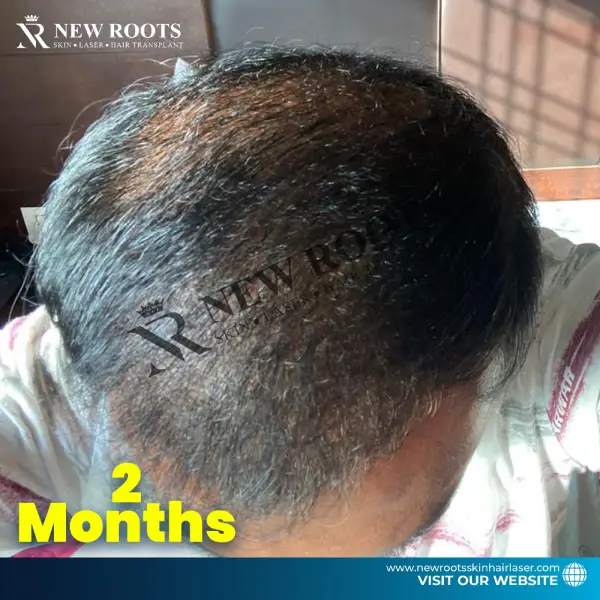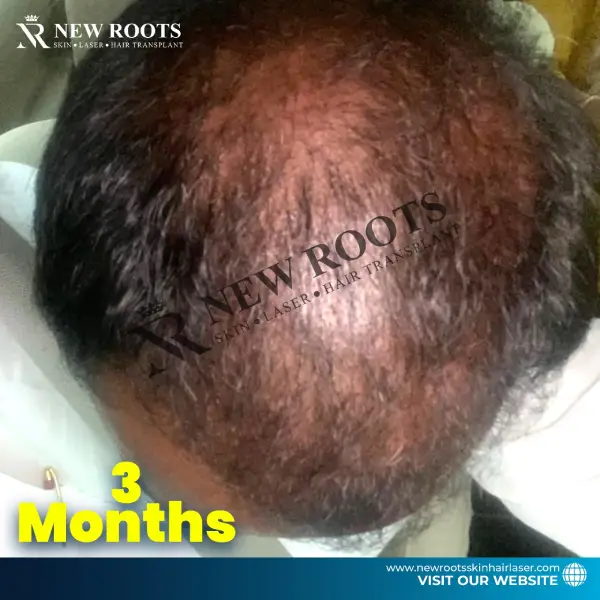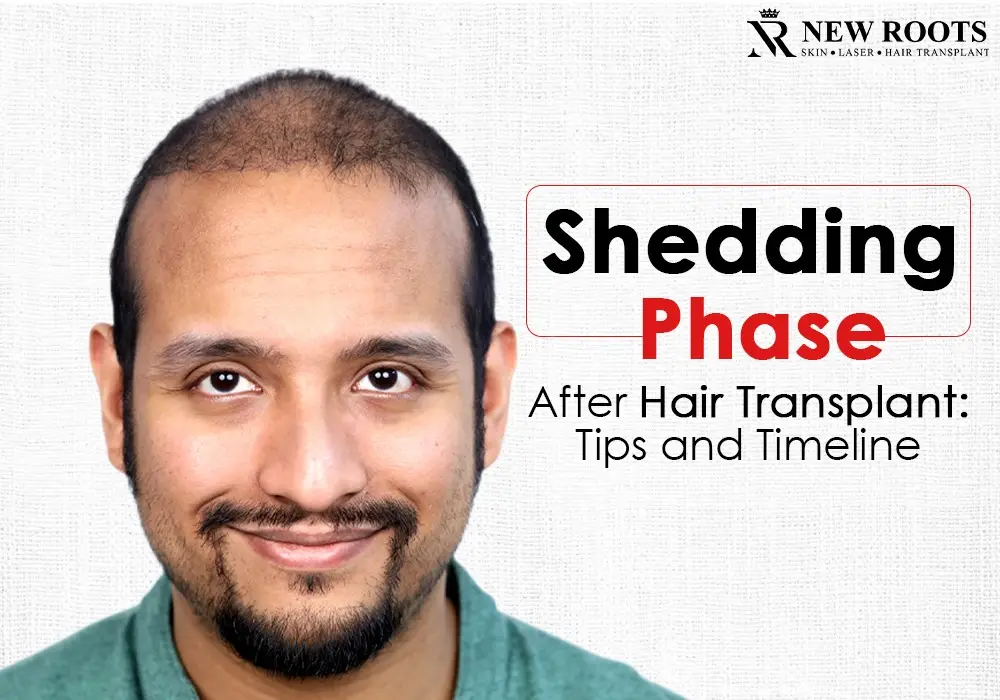Shedding Phase After Hair Transplant: Tips and Timeline
Table of Contents:
- Introduction
- Understanding the shedding phase after hair transplant
- Why Does Shedding Occur?
- What is the Shedding Phase After Hair Transplant?
- What to Expect During the Shedding Phase After Hair Transplant
- To successfully navigate the shedding phase after a hair transplant, consider the following tips:
- Timeline of the shedding phase after hair transplant
- Common Myths About the shedding phase after hair transplant
- FAQs About the shedding phase after hair transplant
Introduction:
The shedding phase following hair transplant surgery is a critical part of which any patient should be aware. Often, people who have done hair transplantation are concerned with the fact that the newly transplanted hair begins to shed. This article will give you a detailed understanding of what to expect in this phase, why it occurs, and how to come out of this phase successfully.
Understanding the shedding phase after hair transplant:
The first stage of hair loss, known as “shock loss”, is normally experienced a few weeks after the actual hair transplant surgery. Also, this is not something new or strange, and it is a short phase that most clients can pass through during the hair restoration process.
At this time, the absorbed hair follicles go through a phase of rest, and the hair stumps that form the hair shafts fall off.
Why Does Shedding Occur?
The Hair Growth Cycle:
To understand why shedding occurs, that is why it is important to understand the cycle of hair growth. Hair growth occurs in three stages: Hair growth occurs in three stages:
Anagen (Growth Phase):
This phase can last 2 - 7 days when the hair is most actively growing.
Catagen (Transitional Phase):
This lasts about 10 days, in which case hair growth is retarded.
Telogen (Resting Phase):
It lasts for about three months, and this results in hair loss.
Shock Loss:
Later on, the scalp experiences some sort of injury from the surgery done for hair transplanting. This stress can cause the hair follicles to enter the telogen phase earlier and make them shed off. This is commonly referred to as shock loss and normally is not a continuing issue because the follicles will sprout again.
What is the Shedding Phase After Hair Transplant?
The shedding period is normal and is the evolvement of hair growth cycles and usually occurs three weeks to three months after the procedure. This phase is called Telogen Effluvium, and this is the phase in which the hair follicles that have been transplanted enter a resting phase before new hair growth commences.
In the course of treatment, it is normal for the existing hair to fall off for a while; this makes some clients panic. But one needs to know it is normal to experience shedding since it is an indication that the hair follicles are natural and preparing for regrowth.
What to Expect During the Shedding Phase After Hair Transplant:
Increased Hair Loss:
Over the few months after the hair transplant operation, it is normal to shed hair in the places where the operation was administered. This shedding is normal and happens because the new hair follicles require some time to adapt to their new conditions on the scalp.
Temporary Thinning:
The shedding phase might cause some further loss of hair in the transplanted regions making the hair look finer for some time. This can be worrying. However, it is quite natural as the new hair follicles prepare to grow.
Itching and Scabbing:
In some instances, the patients may feel slight itching or the formation of scabs on the area that received the transplant on the scalp. It should be possible to manage this if adequate care is taken and your surgeon advises on the correct medication to take.
Emotional Stress:
The shedding phase is often difficult for some of the patients as it resembles that the hair transplant did not work. It is therefore important to note that shedding is natural and what is important is that new hair grows to replace the old one.
Navigating the Shedding Phase:
Here are guidelines and approaches that can be useful in enhancing the eating program’s functionality in addressing eating disorders
To successfully navigate the shedding phase after a hair transplant, consider the following tips:
Communicate with Your Surgeon:
It is therefore advisable to carry out any problem or question that you may experience during the shedding phase to your hair transplant surgeon.
Avoid Excessive Manipulation:
It is recommended not to keep the hands, comb, brush, or any similar thing on the transplanted areas of the head very often, as this causes interference with its recovery and enhances its shedding.
Use Gentle Hair Care Products:
One should also avoid using strong products that include sulfates because this may cause harm to the scalp and hair when they are shedding.
Embrace Patience and a Positive Mindset:
Optionally embrace the notion that it is okay to let it go for Hair flock is the next big thing headed for the bin. Be optimistic and do not talk about any activity in this matter.
Consider Medications:
The solutions that might be applied when treating mpb, like lotions or creams containing minoxidil or finasteride might also be recommended by your surgeon at this phase.
Prioritize Scalp Health:
It is always important to wash the scalp to clean it and use fingers to apply pressure on the scalp to boost blood circulation to the extent of promoting hair growth.
Timeline of the shedding phase after hair transplant:

First Few Days:
After the days following such surgery, the scalability of the scalp becomes inflamed. A certain amount of crusting at the graft’s site is also not unusual.

Week 2-4
About the second to fourth week of oral iron therapy, patients may go through ‘the shedding phase’. This can be rather worrisome at times, but one has to bear in mind that this is normal.

Month 2-3
When in these months the hair, there is no new hair that grows but the follicles remain in the telogen phase. This is the period when visible hair regrowth is not so apparent.

Month 3-6
Hair regrowth is most likely to start from the fourth month up to the sixth month. It merely grows back fine and silky, but after some time, it also gains body.
Month 9-12
A good combination of ability and time should make the client see significant results, such as hair regrowth and an increase in hair density by the end of the first year of treatment. Hair will continue to grow as it gradually develops its thickness characteristic of different hair types.
Follow Post-Op Care Instructions:
- You should make sure that you follow all the post-operative treatment advised by the surgeon. This includes:
- For the treatment of hormonal hair loss, oral contraceptives or anti-androgens such as spironolactone are prescribed.
Keeping the scalp clean:
You have to wash your hair with the chosen shampoo and employ the proper washing method.
Avoiding physical strain:
Avoid activities or exercises that make the body sweat or place pressure on the head at that time.
Not touching the grafts:
There is explicit information not to scratch or pick the transplanted area.
Common Myths About the shedding phase after hair transplant:
Myth 1: Oh My Hair Transplant Failed
Most patients consider slimming as signifying a failed transplant. Nonetheless, shedding is natural and inevitable after any transplant surgery and symbolizes the start of hair growth.
Myth 2: Majority of the Transplanted Hair Will Fall Off
Of all the transplanted hair one will not be able to shed during the shedding phase. Some may maintain a position and increase in size without any discretion.
Myth 3: Moulting thus is a permanent process.
Shedding is temporary. The hair follicles are not dead; they contain new hair that will grow when the rest phase wears out.
FAQs About the shedding phase after a hair transplant:




